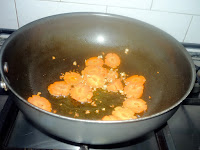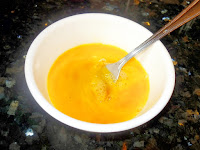The Chinese believe that this soup is a must eat dish
during confinement because dong quai is good for women’s reproductive system. However,
it should not be used by breast
feeding mothers because there is
little information about its effect on the baby through the breast milk.
Dong
quai (當歸) or Chinese angelica root is
a plant whose roots are used as medicine primarily for women having menstrual cramps, premenstrual
syndrome (PMS), menopausal symptoms and infertility. Dong quai
tones and strengthens the uterus by regulating hormonal control, improving
uterine tone which is effective in helping women
who are not menstruating or have scanty period and improving the timing of the menstrual cycle. It is also used to manage hypertension, joint pain,
ulcers, anemia, constipation and in the prevention and treatment of allergic attacks. Dong quai also has a relaxing effect on both the uterus and the nervous system therefore
it should not be used during pregnancy or those with diarrhea, haemorrhagic
diseases, or excessive menstrual flow and anyone using any anti-coagulant or
blood thinning medication such as warfarin or aspirin.
Ingredients
4-5 pieces of dong kwai
½ a
cleaned pig stomach
Slice the pig stomach into bite size pieces
It is important to clean the pig stomach
properly to remove the slime and smell
Please see the recipe ‘pig stomach and fish
maw soup’ for info on cleaning the pig stomach
Put boiling water into the slow cooker
Add the pig stomach and dong quai
Cook on high for 1 hour then turn down to low
for 2 hours
This is because the pig stomach takes a longer
time to become tender
Blanch the chicken to remove the scum
Add the chicken to the soup and cook on low
for another 2 hours
Dish up and serve
Add 1 – 2 teaspoons Brandy or Dom
to the soup just before serving.
You
can add mee suah to the soup if you do not feel like eating it with rice.






























































